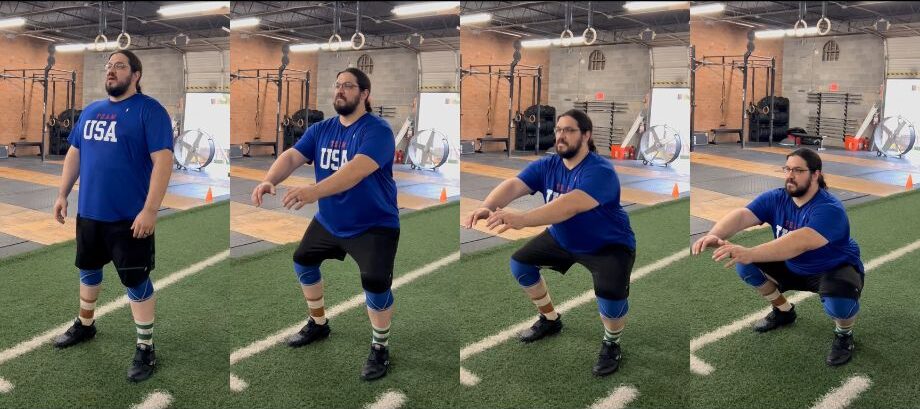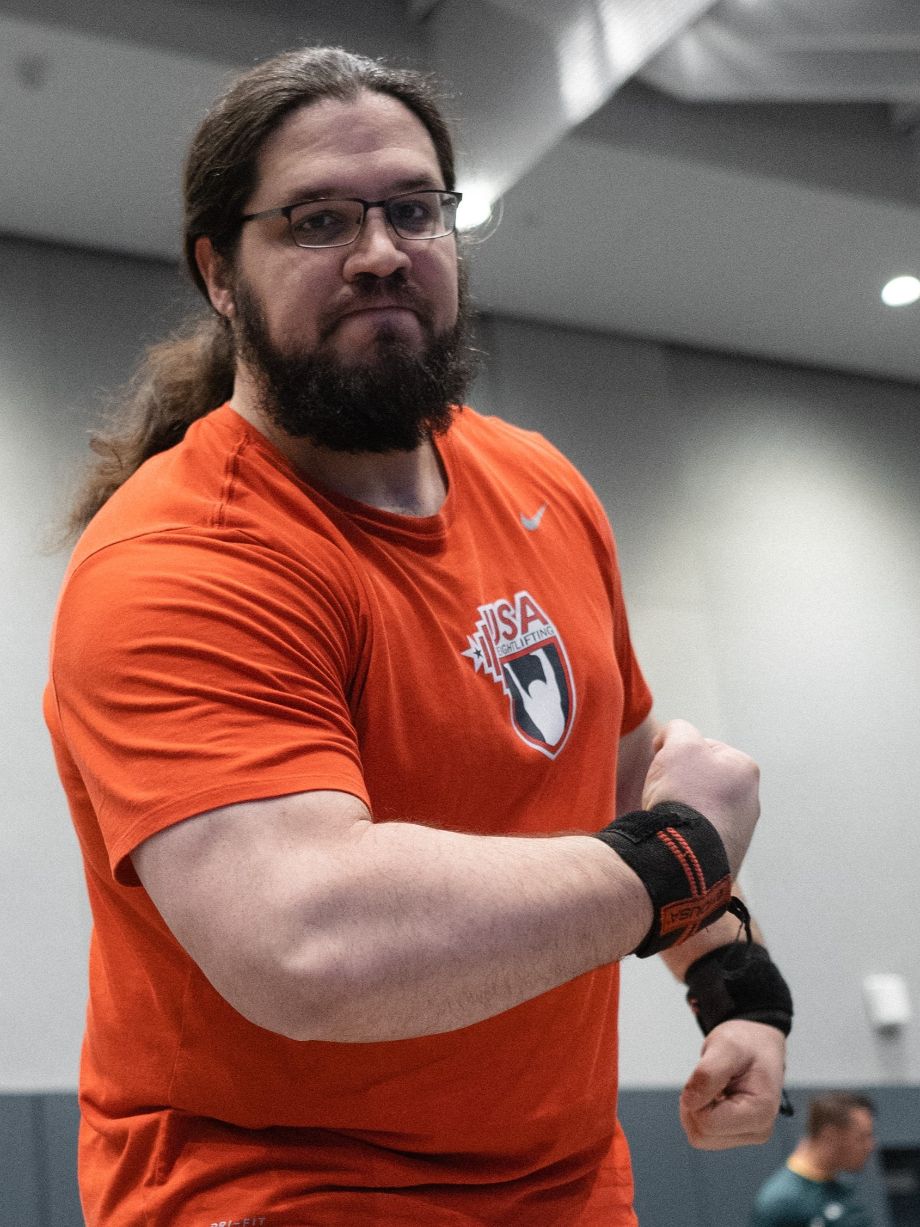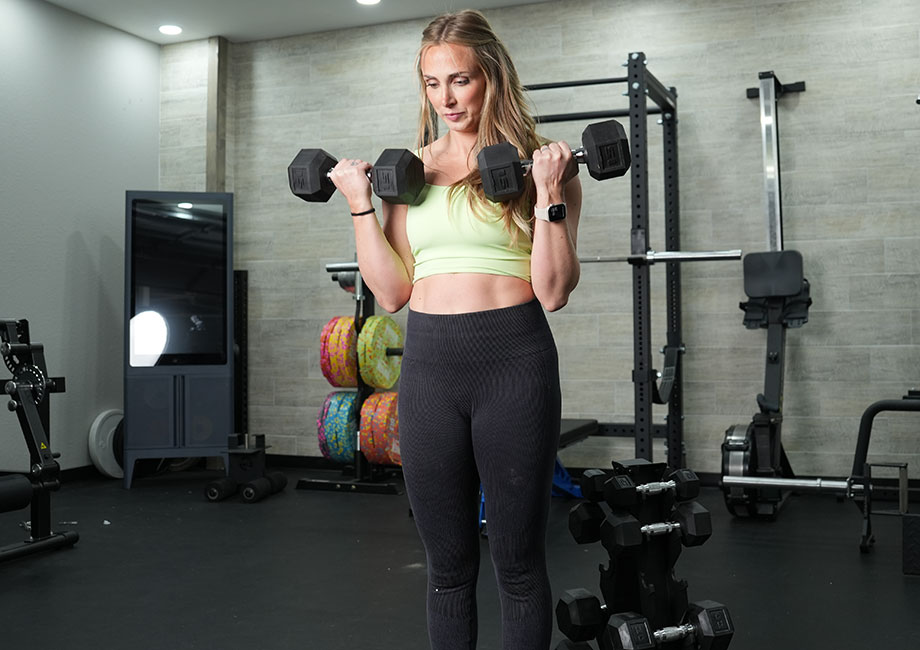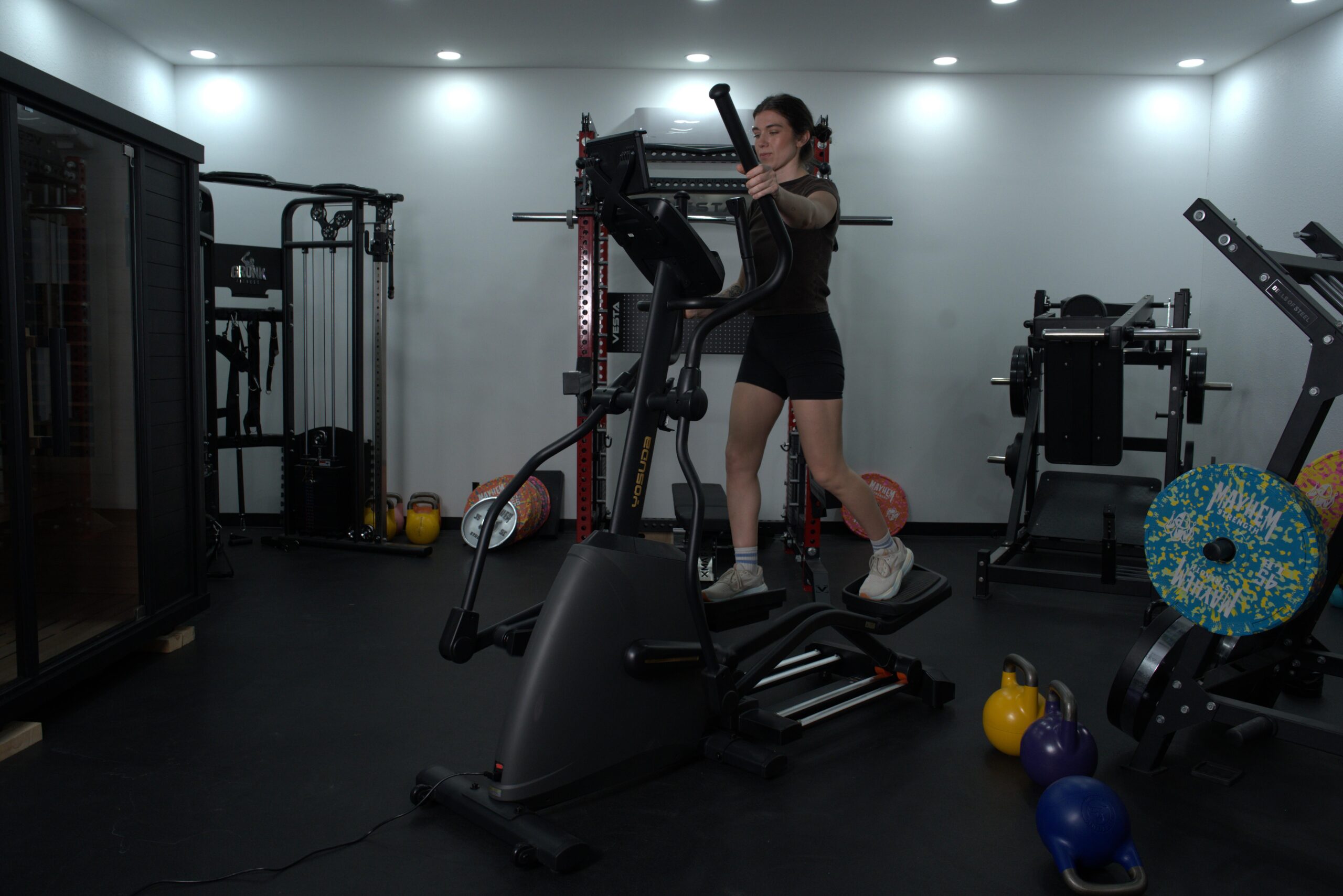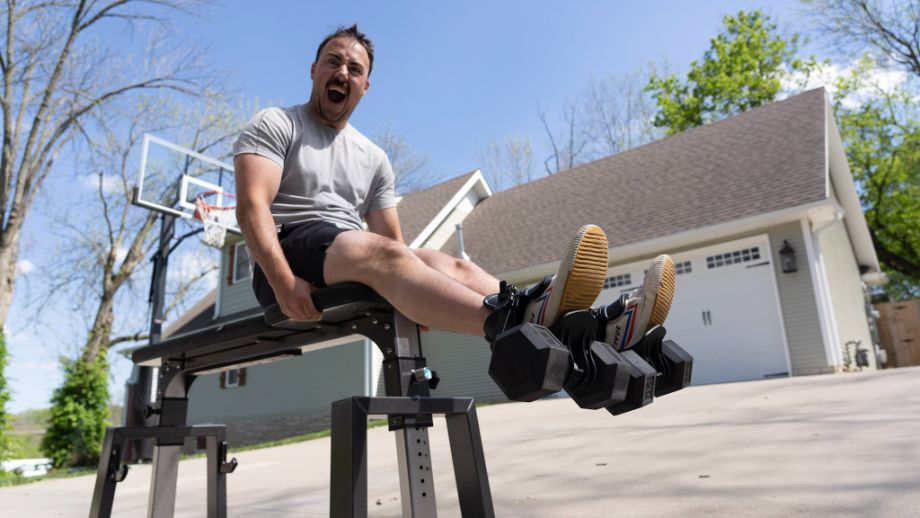I’ve competed in Olympic-style weightlifting for over two decades of my life, training in two squatting movements. I train a myriad of other exercises to help my lifts, but one foundational element I always go back to is squatting. Through this experience, I’ve picked up a thing or two about proper squat form.
Let’s go over some of the tips and technical cues I’ve learned over the years to help you achieve good form, along with a guide on some of the squat variations and progressions to aid you in building a strong squat.
Step-By-Step Guide to the Perfect Squat
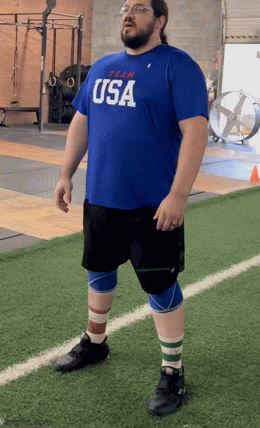
At a first glance, a squat may look simple: just squat down and then stand back up. What more could there be? Well, there’s a bit more; a squat is technical and requires refined movement through the lift. Let’s take a look at the movement patterns and steps involved in your typical squat.
Remember that although we will be talking about bodyweight squats, and squats on a broad level, that these cues will translate and remain fairly uniform across all squat progressions, at most with slight variations.
- Find your starting stance. Unlike a deadlift’s starting stance at hip-width, we want the feet shoulder-width or just outside of it, and pointed slightly outward. Too narrow or wide of a stance will limit your mobility in the squat, leading to more technical flaws, or even worse, injury.
- Brace properly. By bracing, we want to make sure we have a strong, tight core and torso during the squat. Although the squat is primarily a lower-body exercise, we want to make sure the upper body is in proper positions and ready to take a weighted load. In order to do this, we want a neutral spine, having the abdominals and posterior chain tight and active at the start. Maintain this throughout the squat movement.
- Lower down. Start with the hips shifting back and let the knees bend, pushing out a little. Make sure to keep the chest upright, shoulders back, and feet flat throughout the movement.
- Aim for a low depth. As an Olympic weightlifter and coach, I try to get my and others’ squats below parallel, meaning the athlete’s hip crease moves below the knees. Again though, this is a depth that you may need to train towards. If that depth is unsafe, or technique begins to break down, I would recommend going as low as possible with good positions, and training some squat progressions, such as box squats, to move towards a full range of motion.
- Press into the heels. Once at the bottom of the squat, push into the ground with the heels and squeeze the glutes to begin ascending back to your starting position.
Although these are good general guidelines, a proper squat will look different from one person to the next. Due to limb and torso length and mobility, there will be slight variations on a bodyweight squat from person to person.
How upright the chest is will vary; the toes might be turned out or in a bit more, changing how far out the knees track over them; still, the comfortable depth of a squat will also be different. However these slight variations may turn up, remember to follow these steps and general technical cues, and your squat will work the lower body safely and effectively.
Squat Progressions and Squat Variations
Squats can be done without weight, and will still work out the quads, glutes, and hamstrings with a proper amount of sets and reps. However, there are many progressions and variations of the squat, with a multitude of benefits and reasons to use them. Let’s go over some of the more popular variations of the squat.
Box Squat
Why Do It: Box squats are a great progression towards a full squat for beginners. The athlete has a target to squat to, and so the range of motion can be adjusted with a taller or shorter box to accommodate the athlete’s mobility level, adjusting to lower and lower levels as the athlete is able to. In addition, box squats are used by all levels as a way to focus on the posterior chain more.
How to Do It: Box squats are typically done with a barbell but can be done with other weights, or no weight at all.
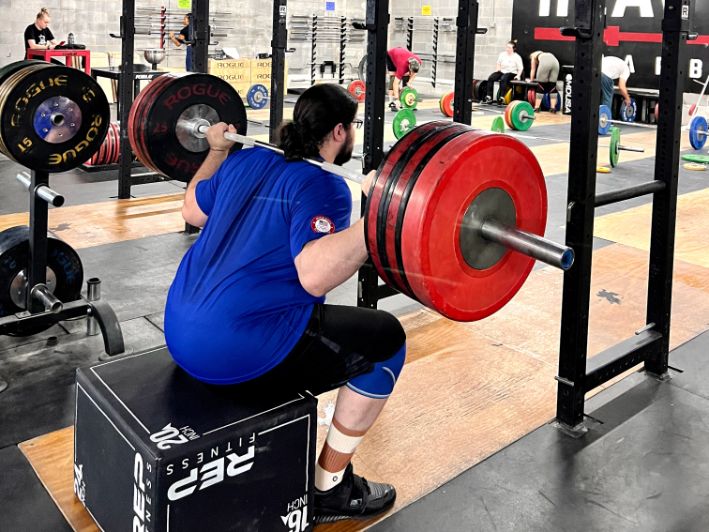
For a barbell box squat, set a box behind a squat rack, and then set a barbell on the rack across the back of your shoulders. Ideally, we want the barbell resting on the traps, just below the nape of the neck. Unrack the bar and step back to the box. After setting up your stance and taking a deep breath to brace, start squatting down. The hips will shift back considerably more in a box squat because of the positioning. Maintain tension in the core and upper body as you set down onto the box. Pause long enough to stop any momentum, and then fire the glutes and dig the heels down to begin standing back up.
Goblet Squat
Why Do It: Goblet squats are a good variation of a squat without a barbell. The lighter loads make it a weighted movement ideal for beginners, but it still has weighted resistance to help build muscle. All squats are considered functional movements, but the odd-object use in a goblet squat makes you focus on stabilizing, engaging the core and maintaining balance.
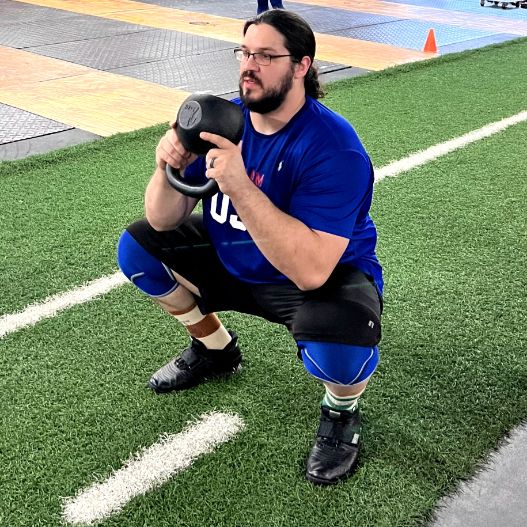
How to Do It: Holding a kettlebell handle upside-down (or a dumbbell head with both hands) in front of your chest, keep the chest up and engaged while squatting down to below parallel and back up. The object held in front forces you to engage an upright chest and strong upper back to stay balanced throughout the movement.
Back Squat
Why Do It: The back squat is often considered one of the most vital leg builders in exercise. It is a test of raw strength for powerlifters, and one of the best ways to build muscle for the entire lower body: quadriceps, hamstrings, and gluteal muscles. This is a needed movement for just about any fitness enthusiast at any level.
How to Do It: In a barbell back squat, take the bar from the squat rack by placing both hands on either side of the barbell and walking underneath, rest the center of the bar on the back of the shoulders. Once unracked, step back and squat down, keeping the chest engaged and high, breaking first at the hip joint before bending at the knees and ankles. Go to your squat depth, then push through the heels to rise back up. It’s important with the added weight on the back to not allow yourself to shift too far forward or backward, as you could lose your balance.
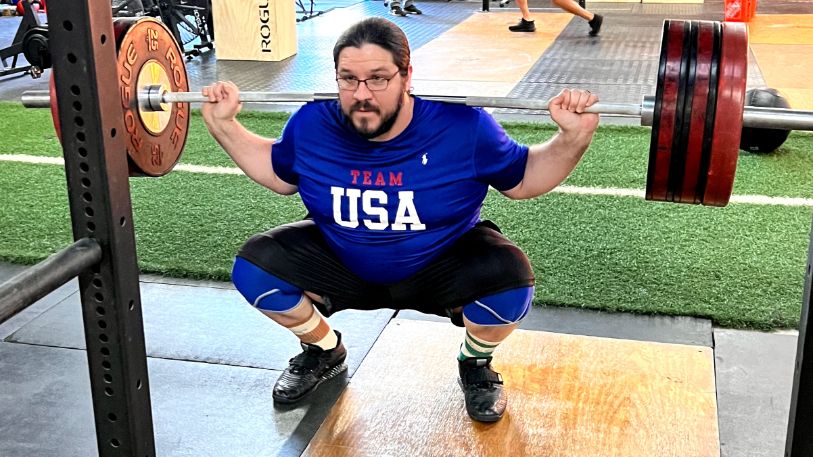
There are also two positions for a barbell to be placed on the shoulders for a back squat: high-bar and low-bar.
High bar squats are what I’ve done more in my strength training. I prefer them as they tend to help me get a full range of motion easier, making the movement more functional. The bar is placed high, across the traps and shoulders.
In a low-bar squat, the bar is more across the shoulder blades. This lower position shifts you forward considerably, making the lifter lean more forward with the chest. Still, a low-bar squat can have less strain on the knees, so it is a good alternative for someone who has had prior knee issues.
Front Squat
Why Do It: This squat position shifts the weight forward onto the front of the shoulders, making the lifter have to engage the upper back and body to maintain an upright chest and strong core. Along with being a leg workout, it will also engage core and back muscles in ways other squats won’t.
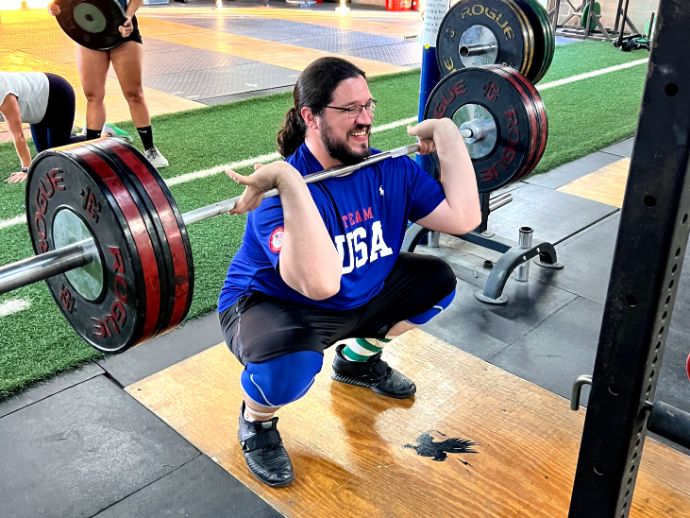
How to Do It: The bar is placed across the front of the shoulders this time. Grip the bar with each hand at about shoulder width, and whip the elbow underneath and up, where the elbows are trying to drive up; this position will also help keep the chest up throughout the movement. Once you have the barbell, squat down, maintaining a tight torso and an engaged upper back; then fire back up with the glutes to standing.
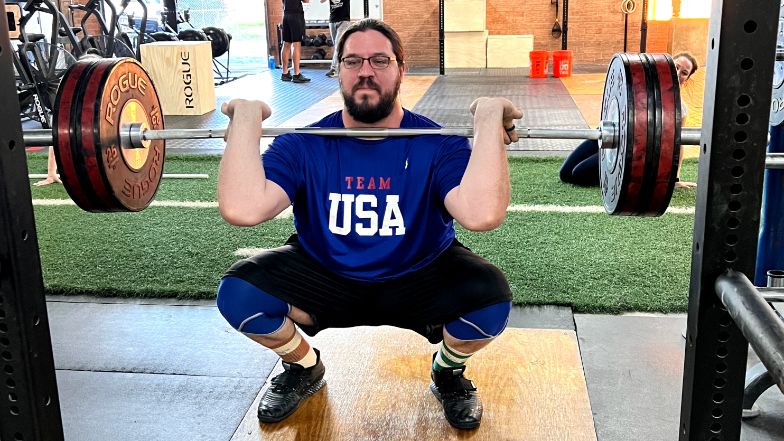
If the front rack position is the limiting factor, I would focus on stretching out your shoulders, wrists, and lats. There are other ways to rack the bar as well, while you improve your mobility on the side. One such variation is a zombie squat, where we place the bar on the front rack as before, but we allow each arm to stretch straight out. This helps keep the upper back engaged, without having to get the elbows bent underneath the bar. We can also have the hands reach across to the other shoulder, to allow for less stress on the wrists in the front rack.
Overhead Squat
Why Do It: Overhead squats are so demanding with core and stability, that they are often considered less of a leg exercises and more of a core exercise. Having a barbell balanced over one’s head requires tons of balance and coordination along with shoulder strength, making this a full-body workout.
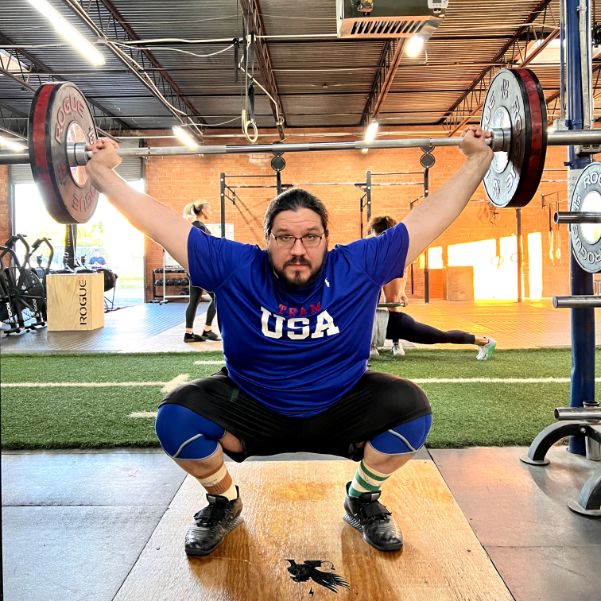
How to Do It: Hoist a barbell over your head with a wide grip on the barbell. The barbell should be balanced over the back of your head, or just behind it. Keeping the shoulder blades tight and pinched back, keep the bar stable as you squat down and back up. Don’t rush the movement; instead, control the barbell as you move, staying balanced throughout.
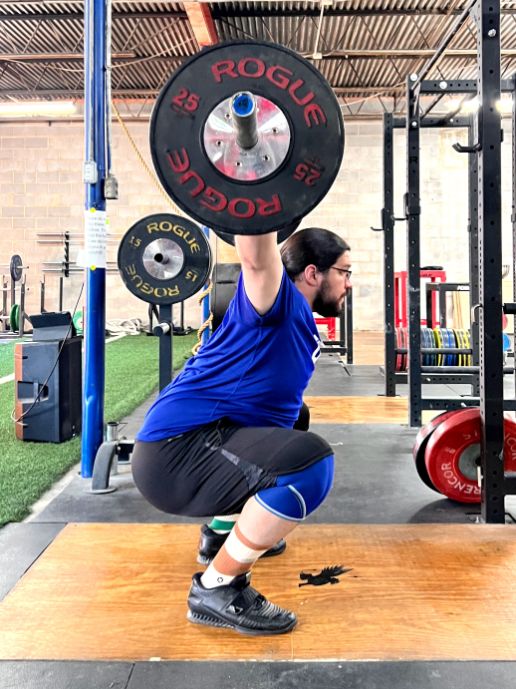
Common Mistakes and How to Correct Them
Everyone makes mistakes! Here are a few things to look for when you are doing squat exercises.
Heels Off the Floor
If your heels come off the floor in a squat, it is typically an issue involving ankle mobility. I would want to look at where your stance is; sometimes, adjusting the width or turning the feet out a little bit is enough to fix a mistake like this. Along with that, I would consider some ankle or calf stretching, such as a lunge stretch.
Knees Cave In
A little bit of knee valgus is permissible, but too much means there’s an issue. If the knees collapse inward, this is typically a hip or ankle mobility issue again, so lunges or glute bridges would help strengthen the hips and work on glute activation. Meanwhile a lunge stretch or tracing lower t’s is a great way to help mobilize the ankles.
As a tactile cue, I would also wrap a light resistance band around the athlete’s knees or thighs, and have them squat trying to keep tension on the band. This makes them focus on keeping the knees pushed out against the band.
Lower Back Folds
In some instances, the lower back loses tightness at the bottom of the squat. This is a tight hips situation as well, but also calls for some stronger core muscle as well. In addition to monster walks with a hip circle, use planks to strengthen the core and lower back.
Chest Drops
If the chest drops during a squat, it’s typically a lats or upper back issue. Roll out and stretch the lats to see if that loosens up and betters the positions. I also would encourage some exercises to help strengthen the upper back muscles, like bent rows. Along with this, I coach cues on engaging the upper body. A simple cue like “chest up” can go a long way!
Final Thoughts: Proper Squat Form
Squats can look like a daunting exercise, but once you understand the basic mechanics of it, they are simple to execute.
- Squats are effective at building the leg muscle groups and giving you a total lower body workout. They can be done with light or heavy weights, and will still provide a solid leg workout.
- A proper squat will be most effective at building muscle as well as reducing your risk of injury.
- Remember the cues! Feet shoulder-width, chest upright, shoulders back, tight core and firing back up through the heels, glutes and legs.
- There are many variations to the squat; try them out! If you are new to lifting, it’s always wise to find someone nearby to help. Consult a coach or personal trainer.
FAQs About Proper Squat Form
What is the correct form for squats?
Proper squat form is keeping a shoulder-width stance with the toes pointed slightly out. One must also maintain a solid core and trunk while moving down and back up. Let the knees track over the toes during squats, driving through the heels and leg muscles to return to standing.
How do I know if my squat form is good?
A squat should not be painful or injurious at all; if you notice things feeling off or even painful, stop and solve the issue at hand before continuing to train with bad form. Also check how your weight is distributed. Being too far forward or backward can lead to other issues, so keep flat-footed while squatting. If a squat becomes unnecessarily tough at a certain point, it could mean a technical flaw, or a muscle weakness. Work on these minor flaws to have a smooth and efficient squat.
What are three techniques for a proper squat?
Make sure you have the proper position first: Shoulder-width stance and a tight, braced core.
Keeping the chest up and upper body engaged, squat down to below parallel.
Push the heels down to stand up to the starting position.


